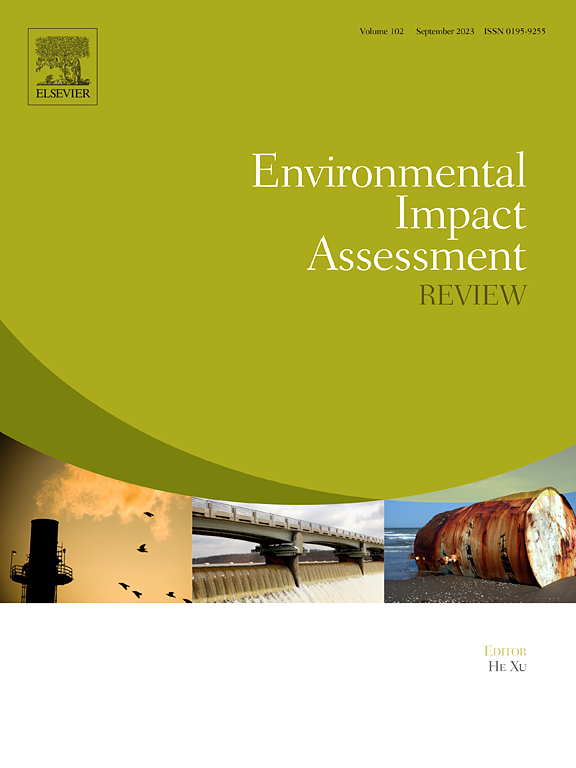On the use of Participatory System Dynamics Modelling for WEF Nexus management: Hints from two case studies in the Mediterranean region
IF 9.8
1区 社会学
Q1 ENVIRONMENTAL STUDIES
引用次数: 0
Abstract
The security of natural resources is increasingly threatened by multiple pressures that range from climate change impacts to socio-economic conditions, and requires a coordinated action by several practitioners and policy-makers. The concept of Nexus has therefore gained increasing attention in recent scientific literature, as it aims to achieve natural resources security in a holistic and integrated way; however, it has still been limitedly put into practice. Different sectors can be included in Nexus studies, and in the present work reference is made to a rather innovative combination which includes Water, Food and Ecosystems. The present paper proposes the use of Participatory System Dynamics Modelling (PSDM) techniques for an improved Nexus understanding, analysis and management to support policy- and decision-makers. More specifically, we argue that Stock and Flow Diagrams (SFDs), besides providing an improved understanding of the complex interactions and interdependencies in Nexus systems, can also help evaluate multiple policies and solutions for Nexus management based on the use of Sensitivity Analysis and on a what-if Scenario Analysis. In this process, the involvement of stakeholders throughout the modelling phases (from model structure building to scenario selection and analysis) guarantees the inclusion of local knowledge as well as the relevance and ownership of results. Reference is made to the experience in a couple of case studies, namely the Pinios River Basin and the Greater Chania Area (both in Greece but characterized by socio-environmental conditions typical of the whole Mediterranean Area), where Nexus management is central to guaranteeing a sustainable future.

参与式系统动力学模型在世界经济论坛Nexus管理中的应用:来自地中海地区两个案例研究的提示
自然资源的安全日益受到从气候变化影响到社会经济条件等多重压力的威胁,需要几位从业人员和政策制定者采取协调一致的行动。因此,Nexus的概念在最近的科学文献中得到了越来越多的关注,因为它旨在以整体和综合的方式实现自然资源安全;然而,它仍然被有限地付诸实践。不同的部门可以包括在Nexus研究中,在本工作中提到了一个相当创新的组合,其中包括水、粮食和生态系统。本文建议使用参与式系统动力学建模(PSDM)技术来改进Nexus的理解、分析和管理,以支持政策和决策者。更具体地说,我们认为库存和流程图(SFDs)除了提供了对Nexus系统中复杂的相互作用和相互依赖性的更好理解之外,还可以帮助评估基于敏感性分析和假设情景分析的Nexus管理的多种策略和解决方案。在这个过程中,利益相关者在整个建模阶段(从模型结构构建到场景选择和分析)的参与保证了本地知识的包含以及结果的相关性和所有权。参考了几个案例研究的经验,即皮尼奥斯河流域和大哈尼亚地区(都在希腊,但具有整个地中海地区典型的社会环境条件),Nexus管理是保证可持续未来的核心。
本文章由计算机程序翻译,如有差异,请以英文原文为准。
求助全文
约1分钟内获得全文
求助全文
来源期刊

Environmental Impact Assessment Review
ENVIRONMENTAL STUDIES-
CiteScore
12.60
自引率
10.10%
发文量
200
审稿时长
33 days
期刊介绍:
Environmental Impact Assessment Review is an interdisciplinary journal that serves a global audience of practitioners, policymakers, and academics involved in assessing the environmental impact of policies, projects, processes, and products. The journal focuses on innovative theory and practice in environmental impact assessment (EIA). Papers are expected to present innovative ideas, be topical, and coherent. The journal emphasizes concepts, methods, techniques, approaches, and systems related to EIA theory and practice.
 求助内容:
求助内容: 应助结果提醒方式:
应助结果提醒方式:


